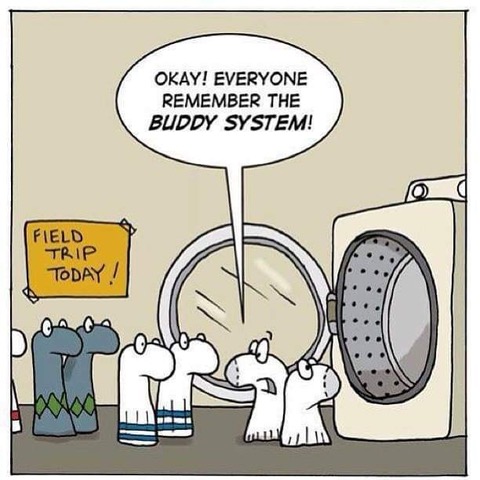|
There are too many orange M&Ms in this bowl.
There is a lot of congestion on I-88 into the city.
There's a piece of confetti in your hair. |
If you're an American communicating in American English, such statements are as common as corn in the Midwest. There is, there are, and the contracted there's are prevalent sentence beginnings in the U.S.
They are also peculiar inclusions in that they do not always offer vital information or grammar. This categorizes them as expletives, which are filler or “empty” words.
While many sentences are more succinct without there is and there are, conversational spoken English is more forgiving of these expressions: Our receiving minds are comfortable with them and usually not concerned with their impact on word count.
In writing, however, we want to be more deliberate in deciding if their use serves a desirable function. Their context will often determine their utility or lack thereof.
When Is It Correct to Use There Is vs. There Are?
Let's first consider how there is, there's, and there are can add excess to our content. We'll return to our original sentences:
There are too many orange M&Ms in this bowl.
There is a lot of congestion on I-88 into the city.
There's a piece of confetti in your hair. |
Once again, we are familiar and likely comfortable with such sentences. We'll approach them again from a grammatical perspective by identifying the subject and the verb.
There are too many orange M&Ms in this bowl.
There is a lot of congestion on I-88 into the city.
There's [contracted is] a piece of confetti in your hair. |
As you can see, the typical order of the subject and verb is inverted. Let's rewrite the subjects and verbs in their standard sequence with the central meaning intact.
Too many orange M&Ms are in this bowl.
A lot of congestion is on I-88 into the city.
A piece of confetti is in your hair. |
We have presented the same information minus one word, the filler word (there). The sentences are more concise as written. If we do want to maintain the word there in our sentences, it could serve as an adverb as opposed to an expletive:
Too many orange M&Ms are there in this bowl.
A lot of congestion is there on I-88 into the city.
A piece of confetti is there in your hair. |
When we use there is, there are, and there's as expletives, we will often do so to delay the subject for style or effect. Some writers may feel that postponing the subject by a couple of well-measured syntactical beats will further emphasize it.
There Is vs. There Are: How to Choose
Confusion about these expressions commonly concerns subject and verb agreement. For example, some of us might not raise an eyebrow if somebody said:
| There's too many orange M&Ms in this bowl. |
It would sound normal to many American ears even though it lacks proper agreement. However, its nonexpletive version would not:
| Too many orange M&Ms is in this bowl. |
Such bending of guidelines and rules (there are to there's) makes certain uses idiomatic. Ideally, in writing we will mainly look to uphold agreement by noting the subject noun that follows the expletive.
There are too many potato-chip bags on the table. (plural subject noun, plural verb)
There is a twenty-dollar bill hanging out of your back pocket. (singular subject noun, singular present progressive verb)
There's [contracted is] a blue jay flying in the park across the street. (singular subject noun, singular present progressive verb) |
When we are speaking—which usually gives us less time to think than writing does—our brain may sometimes trip on an immediate interpretation of the word or words following the expletive.
For example, with our M&Ms example, we might reflexively treat “too many” as a singular grouping with a singular expletive (there's) simply because it strikes our inner ear as one unit before we reach what it modifies, the plural M&Ms.
There Is and There Are: When They Simply Sound Better
Language has its exceptions that don't always bear prescriptive validation. Some expressions simply sound better a certain way than they do when technically precise.
For example, which sentence strikes the American ear as more natural?
A lot of congestion is on I-88 into the city.
There's a lot of congestion on I-88 into the city. |
Many Americans may prefer the second version.
Let's consider two more examples:
Millions of reasons is to elect Mickey as mayor.
There's millions of reasons to elect Mickey as mayor.
Millions of reasons are to elect Mickey as mayor.
There are millions of reasons to elect Mickey as mayor. |
Many will agree that the second version of each pair is the better one; the first versions are clunky and nonsensical.
In cases where a longer series of items follows the expletive, some writers will determine verb agreement according to the first item in the series.
There is a custom bath, four bedrooms, and a gaming room in the Wilsons' house.
There are four bedrooms, a custom bath, and a gaming room in the Wilsons' house. |
Which sounds better to you?
As precise and eloquent writers, we should be most focused on sentences that move with clarity, concision, and rhythm—something the active voice most often achieves. When applied with proper reserve, use of there is and there are can add occasional dashes of flavor to our content.
Related Topic
Collecting the Truth About Collective Nouns
| 




